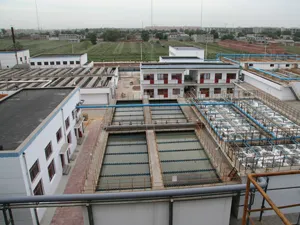PFAS Removal from Water Techniques, Challenges, and Future Directions
Per- and polyfluoroalkyl substances (PFAS) have emerged as a significant environmental concern due to their widespread usage and persistence in the environment. Often referred to as “forever chemicals,” PFAS have been utilized in a variety of industries, including firefighting, stain-resistant fabrics, and food packaging, due to their water- and grease-repellent properties. Unfortunately, these compounds have been detected in water sources worldwide, raising serious public health and environmental concerns. Effective removal of PFAS from contaminated water is critical to safeguard human health and restore ecosystems.
Understanding PFAS and Their Impact
PFAS are a group of over 4,000 synthetic chemicals characterized by the presence of a fluorinated carbon chain. Their unique chemical properties provide resistance to degradation, making them challenging to remove from the environment. Exposure to PFAS has been linked to various health issues, including liver damage, thyroid disorders, immune system dysfunction, and increased risk of certain cancers. The persistence of these substances in the environment, coupled with their bioaccumulation in human and animal bodies, poses an urgent challenge for water treatment systems.
Techniques for PFAS Removal
Several methods have been developed to address PFAS contamination in water. These techniques can broadly be categorized into physical, chemical, and biological methods.
1. Activated Carbon Filtration This is the most commonly used method for PFAS removal. Activated carbon, especially granular activated carbon (GAC), has a large surface area and porous structure that can adsorb PFAS compounds. However, the effectiveness of this method can vary based on the chain length and specific properties of the PFAS present.
2. Ion Exchange This method involves the use of ion exchange resins that can remove PFAS by exchanging ions with the contaminant molecules. While ion exchange is effective for certain types of PFAS, it may require frequent replacement or regeneration of the resin, which can be costly and environmentally taxing.
3. Membrane Technologies Techniques like reverse osmosis (RO) and nanofiltration (NF) show promise in removing PFAS from water. These methods use semi-permeable membranes to separate contaminants based on size and charge. While effective, the operational costs and membrane fouling issues can limit their widespread application.
pfas removal from water

4. Advanced Oxidation Processes (AOPs) AOPs utilize chemical reactions that generate highly reactive radicals to break down PFAS molecules. This includes methods such as ozonation and UV/H2O2 treatment. Although promising, these techniques often require careful handling and may generate by-products that need to be managed.
5. Thermal Destruction This method involves incinerating PFAS-containing wastes at extremely high temperatures. While it effectively destroys PFAS, the process requires sophisticated technology and regulatory approval, making it less practical for large-scale water treatment.
Challenges in PFAS Removal
Despite the advancements in PFAS removal technology, significant challenges remain. The diverse chemical structure of PFAS makes it difficult to develop a one-size-fits-all solution. Moreover, regulatory guidelines governing acceptable PFAS levels in drinking water are still evolving, leading to uncertainty in treatment standards. The high costs associated with implementing and maintaining advanced water treatment systems can also be a barrier for many municipalities, particularly those in economically disadvantaged areas.
Future Directions
To effectively combat PFAS contamination, ongoing research and innovation are vital. Strategies that combine multiple removal techniques may enhance overall efficiency. Additionally, developing new materials with superior adsorption capabilities or degradation pathways can lead to more effective solutions. Policymakers must also finalize regulations that provide clear guidelines for PFAS levels in water, enabling communities to prioritize and invest in appropriate treatment technologies.
Public awareness and community engagement are essential in the battle against PFAS contamination. Through education and advocacy, citizens can press for stronger regulations and support funding for research and deployment of effective treatment methods.
Conclusion
The removal of PFAS from water presents a complex challenge, reflecting the broader difficulties of managing persistent environmental pollutants. While current methods show promise, continued innovation, regulation, and community involvement are critical to ensuring safe drinking water for all. The path forward must be collaborative, integrating scientific research, engineering ingenuity, and public policy to address the PFAS crisis effectively.

